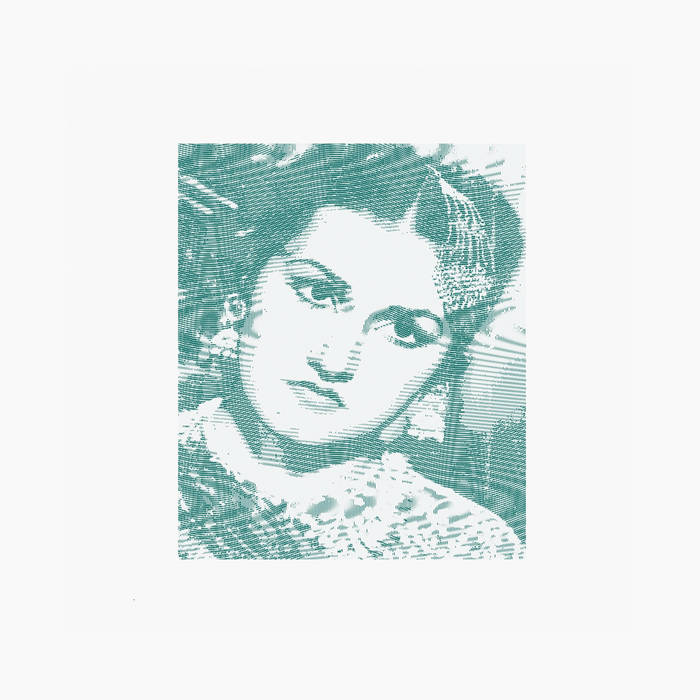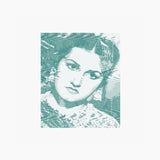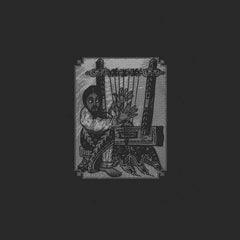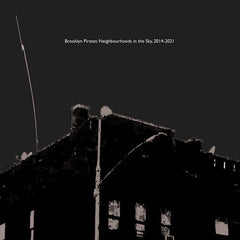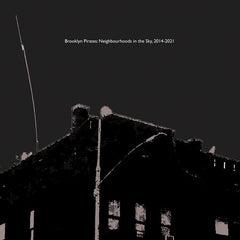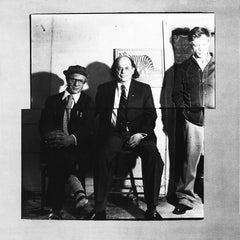Various Artists (Death Is Not The End / Bodega Pop) // Stars from Another Sky Pt. 2: Film Songs from the Subcontinent Before the World Was Torn Asunder, 1940-1947 MIX TAPE
- Availability:
イギリス・ロンドンの発掘専門レーベルDeath Is Not The Endが、2025年4月にリリースした1940年代南アジア映画音楽にフォーカスしたコンピレーションカセットです。
※デジタル音源を無料でお送りいたしますのでお気軽にご連絡くださいませ
以下、レーベルによる解説です。
"1940年代に入ると、南アジア映画は変革期を迎えた。プレイバックシンガーは、その前の10年間にはまだ新しいアイデアだったが、瞬く間に標準的な手法となった。俳優は歌う必要がなくなり、歌手は演技をする必要がなくなった。
ヌール・ジェハン、シャムシャド・ベグム、スレイヤといった歌声が台頭し、亜大陸全土でその名を知られるようになった。彼らの背後では、ナウシャド、アニル・ビスワス、グラム・ハイダーのような作曲家たちが、ラーガと西洋のオーケストレーション、民謡とジャズ時代の楽器を融合させ、映画音楽の音のパレットを広げていた。ハルモニウム、サランギ、ヴァイオリン、アコーディオン、クラリネットがますます複雑なアレンジを埋め尽くし、一方でガザルやカッワーリはムードや構成に影響を与え続けた。
ラージ・カプール、ビマール・ロイ、グル・ダットといった映画人のおかげで、分割統治後の数年間はボリウッドの「黄金時代」とみなされることが多いが、音楽が最盛期を迎えたのは分割統治の直前だった。1947年までには、ナウシャドらがボリウッドの歴史上最も感情豊かで音楽的に複雑な作品を制作しており、その後数十年の間にそれを超えることは困難であった。
しかし、この絶頂期は激動の時代に訪れた。第二次世界大戦、ベンガル飢饉、そして植民地支配の崩壊。映画の歌は、時に哀愁を帯び、時にロマンチックに、時に反抗的に、その不確実性を反映することが多かった。そしてついに分割統治が起こると、この音楽を生み出した世界は分断された。アーティストたちは難民となり、スタジオは分裂し、キャリアは流動的となった。後にパキスタンを代表する歌手となるヌール・ジェハンは、ボンベイで最も愛されている曲の多くを録音した。もう一人の大スター、クルシードは、移住後、表舞台から姿を消した。1930年代から40年代にかけて活躍したK.L.サイガールは、分裂の数ヶ月前にラホールで亡くなった。
このコレクションは、創造的な開花の時期であり、迫り来る破局の時期でもあった、分割前の最後の数年間に及ぶ。パート1と同様、これらの曲はニューヨークとニュージャージーにある移民経営の楽器店から入手した。それらは消えゆく世界の断片であり、それぞれがこの特別な時代を定義した芸術、憧れ、回復力のスナップショットなのだ。"
レーベルその他作品はこちら /// Click here to see more Death Is Not The End releases available at Tobira.
--------------------------------------
Cassette in norelco case.
Tracklist:
1. Leela Chitnis, Ashok Kumar & Chorus - Chal Chal Re Naujawan 04:15
2. Zohra Ambala - Ankhiyan Milake 02:42
3. Shamshad Begum - Ek Kali Nazon Ki Pali 03:01
4. Ashok Kumar & Sitara - Jalja Jalja Patange 03:15
5. Noor Jehan - Badnam Mohabbat Kaun Kare 03:01
6. Noor Jehan, Kalyani, Sohrabai & Chorus - Aahen Na Bharin Shikve Na Kiye 02:57
7. Suman Kalyanpur, Shamshad Begum & Chorus - Dil Gaya To Gaya 08:25
8. Roshanara Begum - Desh Ki Pur Kaif 04:53
9. Ameerbai - Ghar Ghar Mein Diwali Hai 03:42
10. Raj Kumari - Pardesi Ghar Aaja 03:11
11. Noor Jehan & Surendra - Aawaz De Kahan Hai 03:20
12. H. Khan Mastana - Panghat Pe Ek Chhabili 03:15
13. K.L. Saigal - Hat Gai Lo Kaali Ghata 03:11
14. Suraiya - Chale Dil Ki Duniya 03:20
15. Parul Ghosh & Suresh - Tum Ko Mubarak Ho 03:17
Text by Gary Sullivan (Bodega Pop) :
"As the 1940s began, South Asian cinema entered a transformative phase. Playback singing, still a new idea in the previous decade, quickly became standard practice. Actors no longer had to sing, and singers no longer had to act, opening the door to a wave of dedicated vocal talent that redefined the sound of the industry.
Voices like Noor Jehan, Shamshad Begum, and Suraiya rose to prominence, becoming household names across the subcontinent. Behind them, composers like Naushad, Anil Biswas, and Ghulam Haider were expanding the sonic palette of film music, blending ragas with Western orchestration, folk tunes with jazz-era instrumentation. Harmoniums, sarangis, violins, accordions, and clarinets filled out increasingly complex arrangements, while ghazals and qawwalis continued to influence mood and structure.
Although the post-Partition years are often considered to be Bollywood’s “Golden Age,” thanks to filmmakers like Raj Kapoor, Bimal Roy, and Guru Dutt, the music started its peak just before the divide. By 1947, Naushad and others were producing some of the most emotionally rich and musically intricate work in the industry’s history, compositions that would prove challenging to surpass in the decades that followed.
Yet this high point came during a time of immense upheaval. The Second World War, the Bengal famine, and the crumbling of colonial rule all loomed large. Film songs often reflected the uncertainty, sometimes mournful, sometimes romantic, sometimes defiant. And when the Partition finally came, it fractured the world that had created this music. Artists became refugees, studios were split, and careers were thrown into flux. Noor Jehan, who would go on to become Pakistan’s most iconic singer, recorded many of her most beloved songs in Bombay. Khursheed, another major star, faded from public life after migrating. K.L. Saigal, a towering figure of the 1930s and '40s, died in Lahore just months before the split.
This collection spans those final years before Partition, a time of creative flowering and looming catastrophe. Like Part 1, these songs were sourced from immigrant-run music shops in New York and New Jersey. They are fragments of a vanishing world, each one a snapshot of the art, longing, and resilience that defined this extraordinary era."
Artist : Various
Label : Death Is Not The End x Bodega Pop
cat no : DEATH107
イギリス・ロンドンの発掘専門レーベルDeath Is Not The Endが、2025年4月にリリースした1940年代南アジア映画音楽にフォーカスしたコンピレーションカセットです。
※デジタル音源を無料でお送りいたしますのでお気軽にご連絡くださいませ
以下、レーベルによる解説です。
"1940年代に入ると、南アジア映画は変革期を迎えた。プレイバックシンガーは、その前の10年間にはまだ新しいアイデアだったが、瞬く間に標準的な手法となった。俳優は歌う必要がなくなり、歌手は演技をする必要がなくなった。
ヌール・ジェハン、シャムシャド・ベグム、スレイヤといった歌声が台頭し、亜大陸全土でその名を知られるようになった。彼らの背後では、ナウシャド、アニル・ビスワス、グラム・ハイダーのような作曲家たちが、ラーガと西洋のオーケストレーション、民謡とジャズ時代の楽器を融合させ、映画音楽の音のパレットを広げていた。ハルモニウム、サランギ、ヴァイオリン、アコーディオン、クラリネットがますます複雑なアレンジを埋め尽くし、一方でガザルやカッワーリはムードや構成に影響を与え続けた。
ラージ・カプール、ビマール・ロイ、グル・ダットといった映画人のおかげで、分割統治後の数年間はボリウッドの「黄金時代」とみなされることが多いが、音楽が最盛期を迎えたのは分割統治の直前だった。1947年までには、ナウシャドらがボリウッドの歴史上最も感情豊かで音楽的に複雑な作品を制作しており、その後数十年の間にそれを超えることは困難であった。
しかし、この絶頂期は激動の時代に訪れた。第二次世界大戦、ベンガル飢饉、そして植民地支配の崩壊。映画の歌は、時に哀愁を帯び、時にロマンチックに、時に反抗的に、その不確実性を反映することが多かった。そしてついに分割統治が起こると、この音楽を生み出した世界は分断された。アーティストたちは難民となり、スタジオは分裂し、キャリアは流動的となった。後にパキスタンを代表する歌手となるヌール・ジェハンは、ボンベイで最も愛されている曲の多くを録音した。もう一人の大スター、クルシードは、移住後、表舞台から姿を消した。1930年代から40年代にかけて活躍したK.L.サイガールは、分裂の数ヶ月前にラホールで亡くなった。
このコレクションは、創造的な開花の時期であり、迫り来る破局の時期でもあった、分割前の最後の数年間に及ぶ。パート1と同様、これらの曲はニューヨークとニュージャージーにある移民経営の楽器店から入手した。それらは消えゆく世界の断片であり、それぞれがこの特別な時代を定義した芸術、憧れ、回復力のスナップショットなのだ。"
レーベルその他作品はこちら /// Click here to see more Death Is Not The End releases available at Tobira.
--------------------------------------
Cassette in norelco case.
Tracklist:
1. Leela Chitnis, Ashok Kumar & Chorus - Chal Chal Re Naujawan 04:15
2. Zohra Ambala - Ankhiyan Milake 02:42
3. Shamshad Begum - Ek Kali Nazon Ki Pali 03:01
4. Ashok Kumar & Sitara - Jalja Jalja Patange 03:15
5. Noor Jehan - Badnam Mohabbat Kaun Kare 03:01
6. Noor Jehan, Kalyani, Sohrabai & Chorus - Aahen Na Bharin Shikve Na Kiye 02:57
7. Suman Kalyanpur, Shamshad Begum & Chorus - Dil Gaya To Gaya 08:25
8. Roshanara Begum - Desh Ki Pur Kaif 04:53
9. Ameerbai - Ghar Ghar Mein Diwali Hai 03:42
10. Raj Kumari - Pardesi Ghar Aaja 03:11
11. Noor Jehan & Surendra - Aawaz De Kahan Hai 03:20
12. H. Khan Mastana - Panghat Pe Ek Chhabili 03:15
13. K.L. Saigal - Hat Gai Lo Kaali Ghata 03:11
14. Suraiya - Chale Dil Ki Duniya 03:20
15. Parul Ghosh & Suresh - Tum Ko Mubarak Ho 03:17
Text by Gary Sullivan (Bodega Pop) :
"As the 1940s began, South Asian cinema entered a transformative phase. Playback singing, still a new idea in the previous decade, quickly became standard practice. Actors no longer had to sing, and singers no longer had to act, opening the door to a wave of dedicated vocal talent that redefined the sound of the industry.
Voices like Noor Jehan, Shamshad Begum, and Suraiya rose to prominence, becoming household names across the subcontinent. Behind them, composers like Naushad, Anil Biswas, and Ghulam Haider were expanding the sonic palette of film music, blending ragas with Western orchestration, folk tunes with jazz-era instrumentation. Harmoniums, sarangis, violins, accordions, and clarinets filled out increasingly complex arrangements, while ghazals and qawwalis continued to influence mood and structure.
Although the post-Partition years are often considered to be Bollywood’s “Golden Age,” thanks to filmmakers like Raj Kapoor, Bimal Roy, and Guru Dutt, the music started its peak just before the divide. By 1947, Naushad and others were producing some of the most emotionally rich and musically intricate work in the industry’s history, compositions that would prove challenging to surpass in the decades that followed.
Yet this high point came during a time of immense upheaval. The Second World War, the Bengal famine, and the crumbling of colonial rule all loomed large. Film songs often reflected the uncertainty, sometimes mournful, sometimes romantic, sometimes defiant. And when the Partition finally came, it fractured the world that had created this music. Artists became refugees, studios were split, and careers were thrown into flux. Noor Jehan, who would go on to become Pakistan’s most iconic singer, recorded many of her most beloved songs in Bombay. Khursheed, another major star, faded from public life after migrating. K.L. Saigal, a towering figure of the 1930s and '40s, died in Lahore just months before the split.
This collection spans those final years before Partition, a time of creative flowering and looming catastrophe. Like Part 1, these songs were sourced from immigrant-run music shops in New York and New Jersey. They are fragments of a vanishing world, each one a snapshot of the art, longing, and resilience that defined this extraordinary era."
Artist : Various
Label : Death Is Not The End x Bodega Pop
cat no : DEATH107

